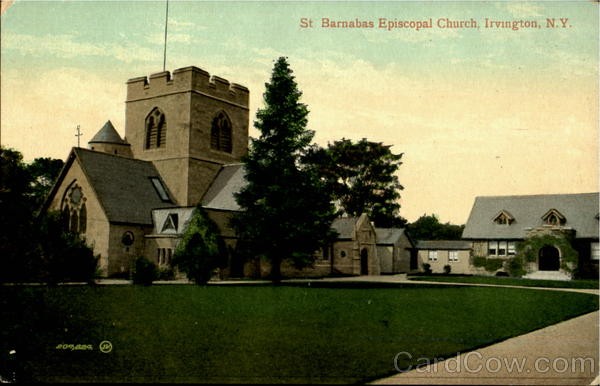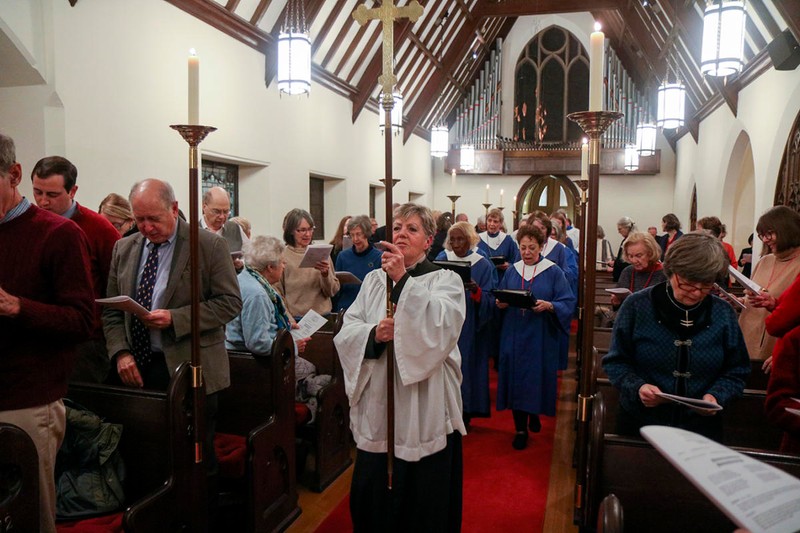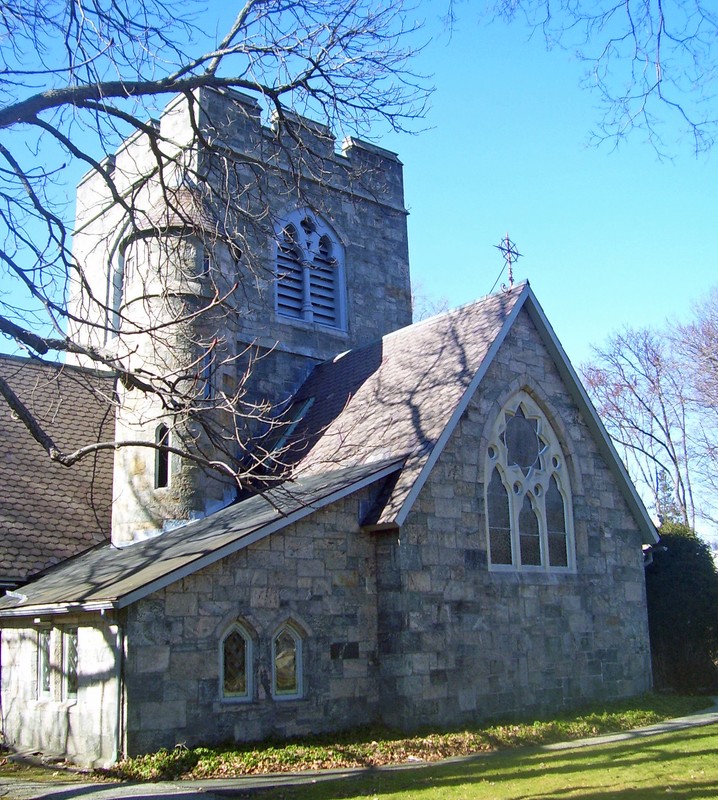Church of St. Barnabas (Irvington)
Introduction
Text-to-speech Audio
Images



Backstory and Context
Text-to-speech Audio
According to tradition, founding a new Episcopal church at Dearman (renamed Irvington) arose from conversations between the two friends.
For 40 years Reverend Dr. John McVickar had been a professor at Columbia College and served as its acting president twice. He also played a key role in the development of the New York City General Theological Seminary. He bought a 30-acre estate between Sunnyside and Dearman's main street (later renamed Irvington) as a summer home, because of his friendship with Washington Irving.
Dr. McVickar sought funds from Irving and other local friends in 1852 and began building a combined chapel and school at the corner of his property nearest to Albany Post Road.
An enthusiastic student of Church architecture, McVickar himself, designed the Gothic Revival building, and a small rectory next door. Dr. McVickar encouraged his son, Reverend William Augustus McVickar, to move to Westchester from New Jersey. William A. McVickar was appointed rector of the Zion Episcopal Church in nearby Dobbs Ferry, and missionary to the Dearman community.
The chapel school, as they called it, was completed in 1853 and dedicated on June 11, St. Barnabas Day. Services started around that time. The parish was officially organized in 1858, with the first rector being McVickar. They used the building only for a couple of years as a school. Under the law of the State of New York, a free public school was built in Dearman at about the same time, reducing the demand for a community private school.
The congregation expanded so quickly it had to build the chapel into a church within 10 years. The design was this time by professional architects, the Renwick and Sands of New York City. The most prominent building of James Renwick was under construction, the St. Patrick's Cathedral.
The expanded St. Barnabas architecture remained faithful to the simple and minimally ornamented chapel, but the architects added some bold additional features such as a huge central tower next to it, with a circular turret-like staircase structure. The chapel became the church's nave, and its size more than doubled with including transepts and a fresh chance.
After 1863, several additional additions were made to the building. A parish house was laid out by A.J. Manning, built in 1902 and later expanded.
In 2000, the church complex was added to the National Register of Historic Places.
Cite This Entry
Steven Keehner on behalf of Westchester County Historical Society and Susanne Pandich. "Church of St. Barnabas (Irvington)." Clio: Your Guide to History. June 16, 2020. Accessed February 23, 2025. https://theclio.com/entry/106619
Sources
Williams, Gray. Picturing Our Past. Elmsford, New York. Westchester County Historical Society, 2003.
"Church Of St. Barnabas, Irvington, NY". 2011. Episcopal Church. https://episcopalchurch.org/parish/church-st-barnabas-irvington-ny.
Cardcow.com
Stbernabaschurch.com
Stbernabaschurch.com

